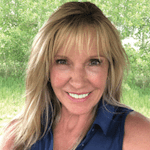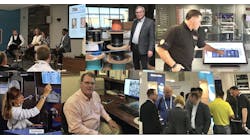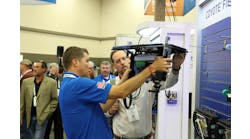Latest from Professional Development/Leadership
Executive Insights With Michael Burke, CEO, Matanuska Telephone Association
Meet Matanuska Telephone Association’s (MTA) CEO, Michael Burke, and learn how his teams deploy underground fiber across Alaska as they work to turn up the first all-terrestrial fiber network from Alaska to the Continental United States.
Topic: Priorities
ISE: What are your top network-related priorities for 2020?
Burke: We are working to complete and turn up the first all terrestrial fiber network from Alaska to the Continental United States by June of 2020. This is a great achievement for our company and will provide capacity we need to continue expanding our broadband offerings in our markets, as well as create geographic route diversity for the State of Alaska. We are also continuing to upgrade thousands of locations in our 10,000-square mile service area for faster broadband services.
Topic: Rural Challenges and Solutions
ISE: What is your greatest pain point delivering higher speeds to underserved and rural communities? What are some solutions?
Burke: The greatest pain points in Alaska is transport to the Internet Peering Point, which for Alaska is Seattle, Washington. That is one of the reasons we are building AlCan ONE, the first all-terrestrial fiber optic connection to Seattle and other peering points in the contiguous United States, so we can continue to meet the growing usage of our customers. Another major issue is right of way. Deploying fiber is more than putting a cable reel in the back of a truck and driving down the road; we have to work with a variety of local, state and federal agencies for permits, as well as individual property owners. Sometimes it can take years to get all the necessary approvals for a project.
Topic: Co-Ops and Network Transformation
ISE: You recently shared the following in an October 2019 article, Co-op Month: By the Community, For the Community.
"Co-ops have grown in both popularity and influence. According to the Cooperative Network and the University of Wisconsin’s Center for Cooperatives, there are more than 40,000 cooperative businesses in the U.S., comprising a membership of 350 million and $514 billion in revenue.
Numbers aside, we work to go above and beyond to make sure "co-op" is more than just a trend on Twitter, or a novel idea spotlighted in the news. We make the effort to understand our members who live in and utilize our service areas, since they are ultimately the people who operate our business."
(See https://www.mtasolutions.com/co-op-month/).
What is the most challenging thing about working to transform MTA’s network as a co-op that states its purpose is service over profit?
Burke: This becomes a balancing act for the company since you still want to ensure that all of our services are being offered at a positive margin. That is a major source of capital for a cooperative since they cannot sell stock. The only other option is debt. The advantage cooperatives have is that they are owned by their customers, and the profits earned are given back to them as patronage, which keeps the funds local.
InvisiLight® Solution for Deploying Fiber
April 2, 2022Go to Market Faster. Speed up Network Deployment
April 2, 2022Episode 10: Fiber Optic Closure Specs Explained…
April 1, 2022Food for Thought from Our 2022 ICT Visionaries
April 1, 2022Topic: Network Heroism
ISE: You wrote this in a 10.19 message: "With smoke clouds billowing and flames threatening infrastructure around the Mat-Su Valley, the fires that broke out this summer were devastating to our community.
Yet, in the face of this loss and damage, our MTA employees, many of whom are residents of the Mat-Su Valley and the areas hardest hit by fires, were out on the ground, working hard to thoroughly ensure that reliable Internet service persisted — despite dangerous conditions."
Share a particularly heroic story about one of the teams (or employees) that helped your communities stay safe and connected.
Burke: We were able to send crews into the impacted areas as soon as the fire crews allowed us access to begin work on restoring services to customers. In most cases, the ground was still smoking in the areas where our crews were working to fix any damage that occurred. We were able to get service up to customers quickly, largely because most of our facilities are buried. Unfortunately, a number of customers lost their homes in the fires, and there was little we could do other than stand by them and support them in any way we could. One of the benefits we provided was robust Wi-Fi in the evacuation areas so people could still have connectivity.
Topic: Fiber Deployment in Alaska
ISE: Alaska is full of uniquely challenging terrain when it comes to deploying fiber. Share the most interesting and successful fiber deployment your teams have faced and overcome.
Burke: We serve a large geographic area in Alaska, roughly the size of the state of Maryland. The winter climate limits when we can work, which means we try and race to get as much conduit as we can into the ground each construction season, where we can later go back and pull fiber during the winter months. MTA has been deploying hundreds of miles of fiber across our region, in most cases dense fiber deployments that will handle upgrades that are needed long into the future. I like to describe our efforts as being similar to landscape architects — where we are now planting the seeds of infrastructure that will support amazing things decades into the future.
Topic: 5G
ISE: Share MTA’s roadmap related to 5G.
Burke: One fact that often gets overlooked on the 5G deployment discussion is the need for robust fiber backhaul to support the data transport that will occur. 5G involves deploying thousands of towers spaced closely together, which means there has to be a lot of fiber connecting each of the towers. MTA’s fiber projects will be necessary to provide any kind of 5G in our area, and we hope to have a strong network that can support any 5G deployments in the near future.
Topic: The Younger You
ISE: What professional and leadership guidance would you offer a younger Michael as he was forging his career path?
Burke: Build on your life experiences and let them help you develop your career. You will see both good and bad examples of management decision-making; try and emulate the sound strategies, and learn to avoid the mistakes.
Topic: Overlooked Issues
ISE: What should all of us in the Information and Communication Technology industry be talking about that we are not? Or, what current topic is the most important that needs additional and different attention?
Burke: How will technology impact how people live and work going forward, and how will that change the types of infrastructure that is needed? Will people still travel to central office locations or will they be working more and more on a decentralized basis from their homes? How will businesses adapt to distance no longer being an issue for employees, where they can be located virtually anywhere in the world and still appear to be next door? And how will this all impact the application of cybersecurity measures?
Topic: The Alaska Plan
ISE: According to your newsletter, MTA alone will invest $250 million combined in private capital and support funds to provide broadband in the MTA areas. Tell us about the most challenging thing about convincing members to invest $250M in the Alaska Plan to help transform MTA’s network over several years.
Burke: This actually was not a big challenge from a membership standpoint, since they all saw the benefits of fiber and the faster broadband that it brings immediately. It’s a given these days that all customers want the best broadband they can get, and, frankly it is critical now for so many activities that we all take for granted. Business and jobs would not exist in our markets without good fiber and broadband services.
Topic: Being All Things to All Users
ISE: A significant challenge for service providers today is the need to simultaneously service consumers and industry verticals, including transportation, high value manufacturing, healthcare, agriculture, smart cities, etc. The range of options puts pressure on networks to be all things to all users. What is your advice to telecom providers about this challenge?
Burke: It’s important to realize you cannot be all things to all people. It’s just too expensive to develop the expertise and assets to accomplish everything well. Focus on 2 or 3 things you can really excel at, and then look at who you can partner with that will fulfill other needs in the market.
Topic: Network Security
ISE: Telecom providers are often considered keepers of the network. What is MTA doing related to network security that is different to protect its 29K co-op members? What is your roadmap to continue succeeding in this area?
Burke: Luckily, we own the best managed IT/data center company in Alaska, AlasConnect, which gives us great expertise in the area of network security. This is a challenge that requires constant attention and is always evolving. It’s also one thing to manage your own network, but many of the risks go beyond the edge of our network and into customer homes and businesses. This creates other challenges that we are working to address via customer education and the deployment of managed network devices that can be used to provide better protection for the IoT devices customers are deploying.
Topic: Longevity
ISE: What is something you’d be happy doing every day for the rest of your career?
Burke: Being a mentor to others to help them succeed, as well as serving as a catalyst for change and progression in the company, and the industry as a whole.
Topic: Smart Cities
ISE: Talk about smart cities. How do we move to more comprehensive smart city initiatives, given the many network deployment obstacles cities and their provider partners face? Share your greatest learnings about smart cities and telecom providers’ interconnected relationship, and how it needs to change in the future.
Burke: Smart cities make for an interesting discussion, and get into what the vision for the future looks like when we talk about our communities. What will future communities look like, and what will be centralized or decentralized? How can we make the right information available on an as-needed basis while preserving privacy?
One common element that will be required is the need to have broadband that creates the interconnected environment that makes it all work. In many ways, the fiber network we are deploying is like the veins in a body, that carry vital information where it is needed that allows the whole body to thrive.
Topic: Upgrade Realities and ROI
ISE: Upgrading a network is no small feat, nor is it inexpensive. Thus, all network upgrades must be thoroughly vetted to ensure that they both provide the necessary performance enhancements while also making themselves financially viable. It’s a tricky balancing act. What network upgrades are most important to MTA?
Burke: Our fiber deployments are certainly very important for the future. We believe that the fiber infrastructure will future-proof our network for whatever new bandwidth requirements may come our way. Following closely on that will be the technologies we deploy over that fiber that will enhance security and also ensure that the content that is needed gets to the users.
Topic: Agility
ISE: A business needs to run 2 models simultaneously. One optimized for today and one optimized for tomorrow. How do you do that well without neglecting one or the other?
Burke: That is always a challenge, since the current fires can distract from the long-term vision. You always have to make sure that the pressing issues are handled — and having a great team around you helps tremendously with that. The long term cannot be forgotten and has to be part of all of your strategic thinking, or else you can never get the company to move forward and stay successful. Realize that the future is hard to predict, so try and create a business model that is flexible and can shift as technology or other factors change.
Topic: Your Role
ISE: What is the most interesting thing about your role? What would you recommend to someone who wants to achieve a high-level position in their career?
Burke: I find one of my most critical tasks to keep a focus on what is happening in the environment outside of the company. Economic, political, technological, and competitive changes occur constantly, and have impacts on your business strategy. I also find that attracting and retaining the right talent is key for the business, because you cannot do everything and be everywhere, so you have to rely heavily on others.
Like this Article?
Subscribe to ISE magazine and start receiving your FREE monthly copy today!
Topic: Failure
ISE: How do you embrace failure and encourage risk-taking across your organization?
Burke: You have to embrace failure, since not everything that is attempted will succeed. If you have no failures, then it suggests you are not trying to push for anything new, and a business that is stuck in the past will ultimately become irrelevant. Thomas Edison took 1,000 tries to invent the light bulb, but didn’t regard each action as a failure, but rather part of the learning process to get something accomplished.

Sharon Vollman | Content Ambassador for ISE EXPO
Sharon Vollman is the Content Ambassador for ISE EXPO. She is passionate about collaborating with thought leaders, SMEs and hard-working doers who design, plan and deploy ultra-reliable broadband networks. Vollman is committed to creating a variety of educational offerings for ISE EXPO attendees that inspire them to connect every U.S. citizen with the broadband networks we all want for our children and grandchildren.
Vollman has created educational partnerships with Broadband Service Providers including AT&T, Verizon, Lumen, Frontier Communications and others. She has covered the telecom industry since 1996.








